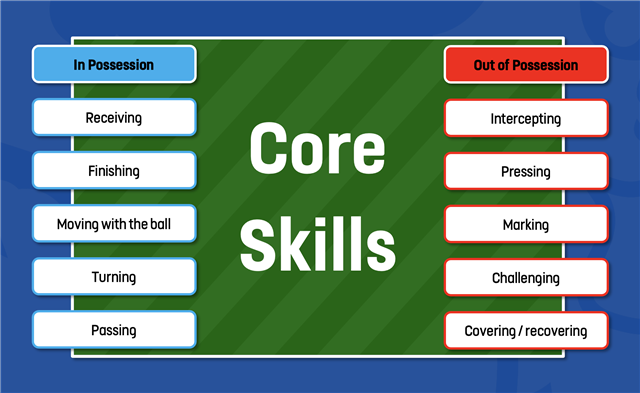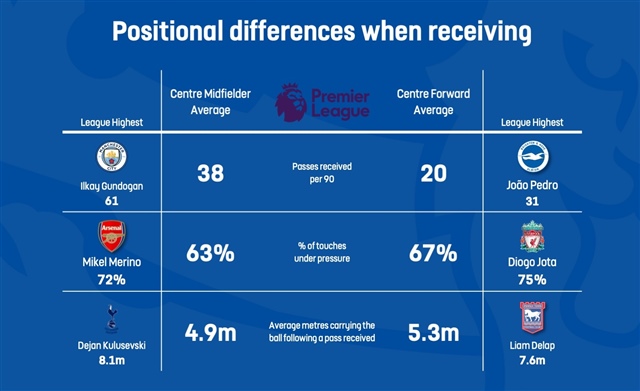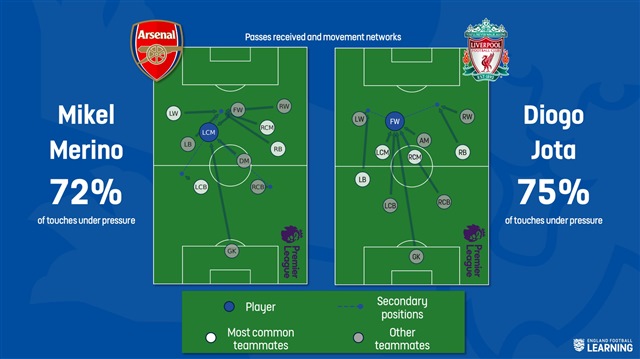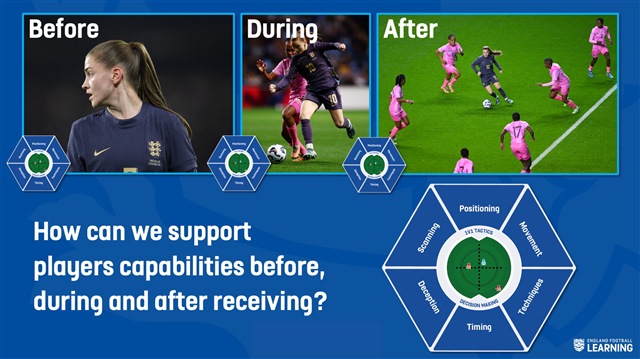What are the core skills?
Core skills are fundamental to a player’s ability to perform well and impact games. They can include on the ball and off the ball actions and relate to both in and out of possession technical skills.

These core skills might look very different based on the positional roles and responsibilities players are given on a matchday. Within this blog, we’ll take a closer look into how the core skill of receiving might vary for centre midfielders and centre forwards…
Receiving in the Premier League
Analysis of the Premier League this season shows that centre midfielders receive the ball on average nearly twice as much as centre forwards within a 90-minute game. However, when we begin to dig a little deeper into the data, we can see that centre forwards have a higher percentage of touches under pressure and carry the ball further distances after they receive a pass.

This data shows that positional differences provide different challenges when it comes to receiving the ball. When we look at the players with the highest numbers in the league, we begin to see how individual player profiles and team styles will have a major effect on the conditions a player might receive the ball in.
When it comes to the percentage of touches under pressure in the Premier League, Diogo Jota at Liverpool is the highest centre forward and Mikel Merino at Arsenal is the highest centre midfielder. The graphics below show these two players’ average positions on the pitch and the passes they receive from teammates. Diogo Jota’s positions (other areas he often receives the ball) show that he generally stays high up the pitch, looking to receive passes centrally from midfielders, or wide on the pitch to receive passes from wide players. Mikel Merino’s graphic illustrates that he often drops wide of the full backs and receives passes from them or receives passes from wide players higher up the pitch.

How might receiving look different for Diogo Jota and Mikel Merino? What types of situations call for different types of receiving? How can we better observe, and then for coach receiving skills?
Breaking receiving down
The before, during, after model can be used for any of the core skills and closely ties in with the six player capabilities (pictured within the graphic below).

All six player capabilities are important at each stage of receiving. Below are some key considerations for each stage…
- Before receiving the ball, scanning and positioning are important to assess where teammates and opponents are and to be in good areas to receive.
- During the skill of receiving, players must use technique and deception to effectively control the ball and take it away from an opponent become important.
- After receiving the ball, effective timing and movement are key to decide where you want to ball to go next, by passing it early or moving with the ball at the right time.
Watch the videos below for examples of how to observe receiving before, during and after the ball arrives with a player.
Centre Midfielder - Martin Ødegaard
Centre forward - Taiwo Awoniyi
Coaching considerations
How do the positions players are playing in dictate how they might commonly receive the ball?
How do the specific roles and responsibilities of those positions influence types of receiving?
How might you vary a players positional experiences to afford them different opportunities to receive the ball?


